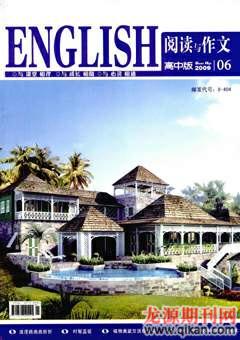稻米从田野到餐桌的历程
A Chinese proverb says "the precious things are not pearls and jade1 but the five grains",of which rice is first. Have you ever wondered about the journey the grains of rice take before they reach your plate or bowl,or fork or chopsticks?
Sowing the seeds First, the seeds are sown. Sometimes, they are planted directly in the paddies2, but often they are sown in nurseries where they spend their first 30 days sprouting3 into seedlings4.
Transplanting to the fields After about 30 days, the seedlings (young rice plants) are transplanted5 to the fields. Transplanting is exhausting, tiring work that requires standing in water and repeatedly bending over.
Harvesting When the mature plants are a golden yellow colour, the new grains are ready to harvest. Sometimes farmers use a mechanical reaper6, but often they use only a sharp knife or sickle.
Threshing7 Threshing separates the grains from the stalks8. This can be done with mechanical threshers or combines, but often the stalks are simply pounded against a hard surface. When threshing is done without machinery, the rice is tied into bundles and dried in the sun first.
Drying the rice Drying is very important because if the moisture content is too high, the freshly harvested grains will spoil easily. In many countries, the grains are laid out to dry wherever space is available, from basketball courts to sections of major highways. Affluent9 farmers may put large quantities of grains into heated air dryers.
Distribution and marketing Grains for the local or international markets are placed in bags for shipping via10 water buffalo11, cart, wagon, truck, boat, train, or any other form of transportation imaginable.
Processing For eating at home, farmers separate the hulls12 from the grains through pounding. Commonly, this is done by placing the grains in a mortar13 in which they are pounded with a pestle14. The hull debris15 (or chaffl6) is separated from the grains by winnowing17 the pounded mixture into the wind from a shallow basket.Rice grains in commercial mills are polished using a mechanical mill.
Preparation Rice grains are commonly boiled or steamed and eaten alone. But, because rice can be part of so many dishes, we will leave the rest of the story to your imagination!
中国有句谚语:“宝贵的东西不是珍珠和翡翠,而是五谷”,五谷之首就是稻米。你是否想过饭粒盛到你的盘子和碗里之前,你用叉子或筷子触及它们之前,它们所经历的路程呢?
播种首先要播种。有时它们被直接种在水稻田里,但是它们通常被播种在苗圃里,在那里度过最初的30天,从发芽到长成秧苗。
移栽至大田大约30天之后,秧苗(水稻的幼苗)被移栽到大田里。移栽工作既疲劳又枯燥,人们需要站在水里,不停地弯腰。
收获当成熟的稻谷呈现金黄色时,新粮食就该收获了。有时农民用机械收割机,但是他们往往只使用锋利的刀子或镰刀。
脱粒脱粒是将谷粒与稻秸分开。可以用机械脱谷机或联合收割机,但是常常只是将稻秸朝一个坚硬的表面摔打。如果不用机械脱粒,稻谷要被捆成捆,先在太阳下晒干。
干燥干燥非常重要,因为如果水分含量过高,新收获的稻谷很容易腐坏。在许多国家,稻谷被晾晒在任何有空场的地方进行干燥,诸如篮球场甚至主干公路路面上。富裕农民会将大量的稻谷放在热气干燥机内干燥。
销售与市场供应本地或国际市场的稻谷被包装成袋,通过水牛、手推车、马车、卡车、船只、火车或任何想得到的交通工具来运输。
加工如果自家食用,农民用舂的方法将谷壳与米粒分开。一般做法是将谷粒放在臼里,用杵击打。将杵过的稻谷盛在簸箕里在风中扬场使谷壳碎片(或谷糠)与米粒分开。商业磨坊的米粒都经过机械磨的打磨。
做饭大米一般是经过煮或蒸单独食用。但是,由于大米可以是许多菜肴的配料,所以我们将余下的事情留给你去发挥想象力!
注释
1.jade n. 碧玉,翡翠
2.paddy n. 稻,谷,稻田
3.sprout vi. 萌芽,发芽
4.seedling n. 秧苗,树苗
5.transplant vt. 移植,移栽
6.reaper n. 收割者,收割机
7.thresh vt. 脱粒,打谷
8.stalk n. 茎,梗,秆
9.affluent adj. 丰富的,富裕的
10.via prep. 经,通过,经由
11.buffalo n. 水牛
12.hull n. (果实等的)外壳
13.mortar n. 臼,研钵
14.pestle n. 槌,杵
15.debris n. 碎片,残骸
16.chaff n. 谷壳,糠
17.winnow vt. 簸,扬(谷),吹开糠皮

